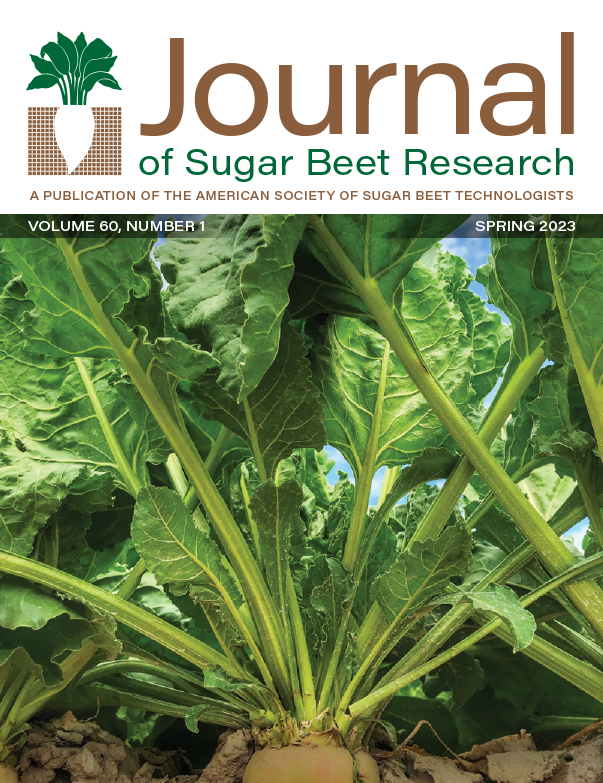Abstract
Glyphosate-resistant (GR) waterhemp (Amaranthus tuberculatus) and common ragweed (Ambrosia artemisiifolia) are weed control challenges in sugarbeet in North Dakota and Minnesota. Sugarbeet growers control GR weeds using soil residual chloroacetamide herbicides (group 15) for waterhemp control and clopyralid (group 4) for common ragweed control. However, growers need additional effective herbicides to improve the consistency of broadleaf weed control in sugarbeet. Florpyrauxifen-benzyl (Rinskor) is a mimic auxin herbicide (group 4) which controls susceptible plants by disrupting plant growth processes. Rinskor is labeled as Loyant for postemergence grass, sedge, and broadleaf weed control in rice at 30 g ha-1 in Arkansas, California, Florida, Louisiana, Mississippi, Missouri, South Carolina, Tennessee, and Texas. Experiments conducted in Europe suggest sugarbeet may tolerate Rinskor to 2 g ha-1. Experiments to examine crop safety and selective weed control from Rinskor were conducted at six locations in Minnesota and eastern North Dakota in 2021 and 2022. In 2021, Rinskor at 0.5, 1, 2, and 4 g ha-1 was applied at the 2, 6, or 10 sugarbeet leaf stage and in 2022, repeat applications of Rinskor at 0.5, 1 and 2 g ha-1 alone or in mixtures with glyphosate, ethofumesate and S-metolachlor were applied at the 2-lf and 6-lf stage. Waterhemp control in 2021 and 2022 and common ragweed control in 2022 were compared to standard sugarbeet weed control programs. In 2021, sugarbeet tolerated Rinskor at 0.5 and 1 g ha-1 at the 2- and 6-lf stage, but sugarbeet did not tolerate the 10-lf stage of application. In 2022, sugarbeet tolerated repeat Rinskor applications at 0.5 and 1 g ha-1 at the 2- and 6-lf stage. Sugarbeet root yield from Rinskor at 0.5 and 1 g ha-1 at the 2-lf and 6-lf stage was the same as the untreated control in 2021, but Rinskor at 1 g ha-1 repeated at the 2- and 6-lf stage reduced root yield in 2022. Rinskor did not affect % sucrose content in either 2021 or 2022. Rinskor alone at 0.5 or 1 g ha-1 only provides suppression of waterhemp or common ragweed, and will therefore need to be mixed with other sugarbeet herbicides including the chloroacetamides to achieve 95% or greater waterhemp control and clopyralid to achieve 95% or greater common ragweed control.

